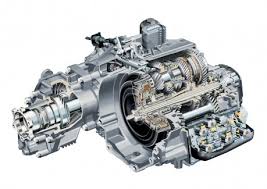Mobile:+86-311-808-126-83
Email:info@ydcastings.com
Understanding the Properties and Applications of 1.4852 Stainless Steel Alloys
Understanding 1.4852 Stainless Steel Properties and Applications
1.4852 stainless steel, also known as alloy 310S, is a highly versatile and widely used steel that belongs to the austenitic family of stainless steels. This alloy, with a composition predominantly consisting of nickel and chromium, is renowned for its excellent high-temperature resistance and outstanding corrosion resistance. In this article, we will explore the properties, benefits, and typical applications of 1.4852 stainless steel.
Composition and Characteristics
1.4852 stainless steel contains approximately 25% chromium and 20% nickel, which contribute to its superior oxidation resistance and stability at elevated temperatures. This alloy is designed for high-temperature applications, maintaining its strength and structural integrity in environments where other materials might fail. Its low carbon content minimizes the risk of carbide precipitation during welding, making it ideal for applications where welded joints are necessary.
One of the standout features of 1.4852 stainless steel is its exceptional resistance to oxidation at temperatures reaching up to 1,100 degrees Celsius (about 2,012 degrees Fahrenheit). This property is crucial for industries that operate in high-temperature settings, particularly in the chemical processing and energy production sectors.
Corrosion Resistance
In addition to its heat resistance, 1
.4852 stainless steel exhibits excellent corrosion resistance in various environments, including acidic and alkaline media. The presence of chromium forms a passive layer of chromium oxide on the surface, which protects the underlying metal from corrosion. This makes it an ideal choice for components that come into contact with aggressive chemicals, ensuring longevity and reliability in service.Mechanical Properties
The mechanical properties of 1.4852 stainless steel further enhance its application potential. It displays good tensile strength and high ductility, making it easy to work with and shape. The alloy can be effectively cold-worked, bent, and formed into complex shapes without compromising its strength. Furthermore, 1.4852 retains its mechanical properties at high temperatures, which is essential for applications that involve fluctuating thermal conditions.
1.4852 stainless steel

Applications
Due to its unique combination of high-temperature strength and corrosion resistance, 1.4852 stainless steel finds applications across various industries. Here are some common uses
1. Chemical Processing Equipment The alloy’s ability to withstand harsh chemicals makes it suitable for manufacturing reactors, heat exchangers, and piping systems in chemical plants.
2. Power Generation In power plants, 1.4852 is often used in components exposed to high heat and potential corrosive environments, such as furnace parts, combustion chambers, and superheater tubes.
3. Food Industry The alloy is also utilized in the food processing sector, particularly in high-temperature applications involving sterilization and pasteurization equipment.
4. Aerospace The aerospace industry employs 1.4852 stainless steel in components that require durability and resistance to high temperatures, ensuring safety and performance in flight operations.
5. Oil and Gas Industry This alloy is suitable for valve bodies and other components that face extreme conditions and require reliable performance over time.
Conclusion
1.4852 stainless steel is a robust material that meets the demands of a wide range of applications thanks to its remarkable resistance to heat and corrosion. Its unique properties make it a preferred choice for industries where performance and longevity are paramount. As technological advancements continue to evolve, the development and use of 1.4852 stainless steel will likely expand, further enhancing its role in modern engineering and manufacturing. Whether in chemical processing, energy generation, or aerospace, this alloy remains a cornerstone material that supports innovation and progress in various sectors.
-
Why Should You Invest in Superior Pump Castings for Your Equipment?NewsJun.09,2025
-
Unlock Performance Potential with Stainless Impellers and Aluminum End CapsNewsJun.09,2025
-
Revolutionize Your Machinery with Superior Cast Iron and Aluminum ComponentsNewsJun.09,2025
-
Revolutionize Fluid Dynamics with Premium Pump ComponentsNewsJun.09,2025
-
Optimizing Industrial Systems with Essential Valve ComponentsNewsJun.09,2025
-
Elevate Grid Efficiency with High-Precision Power CastingsNewsJun.09,2025











